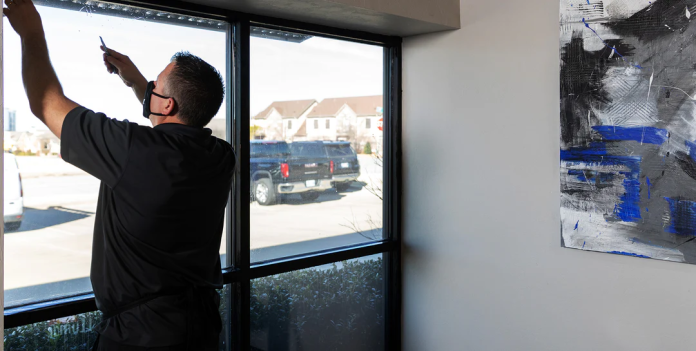When you think of window tinting, your mind might automatically go to car windows, providing privacy and style. However, window tinting is not limited to vehicles. In fact, it has a significant role in the architectural world, where it offers a range of benefits beyond aesthetics. In this blog, we’ll explore the art of architectural tinting, how it transforms buildings, and why it’s becoming increasingly popular.
Understanding Architectural Tinting
Architectural tinting involves applying a specialized film to the windows of homes, offices, and other buildings. This film is designed to enhance both the functionality and appearance of the windows. While it might not make your building look like a secret spy lair, it provides a wide array of benefits.=
1. Energy Efficiency
One of the primary reasons for opting for architectural tinting is its energy-saving capabilities. These films have advanced heat-rejection properties, meaning they can keep the interior of a building cooler during hot summer months. By reducing the amount of heat entering a building, they decrease the need for air conditioning, leading to lower energy bills. This not only saves money but also reduces the carbon footprint of a structure.
2. Glare Reduction
Glare can be a significant issue in homes and offices with large windows, particularly those in sunny locations. Architectural tinting films effectively reduce glare from the sun without compromising the amount of natural light coming in. This means you can enjoy a well-lit environment without the discomfort of squinting or straining your eyes.
3. UV Protection
Just as with car window tinting, architectural films block harmful ultraviolet (UV) rays from the sun. UV rays can cause fading and damage to furniture, flooring, artwork, and other valuables within a building. By installing architectural tinting, you can protect your interior investments and prolong their lifespan.
4. Enhanced Privacy
Privacy is a crucial factor in both homes and offices. Tinted windows provide an increased level of privacy by making it more challenging for outsiders to see inside. This added privacy is especially important in urban environments, where buildings are often in close proximity to one another.
5. Aesthetic Appeal
Architectural tinting doesn’t just offer practical benefits; it can also enhance the visual appeal of a building. These films come in various shades and colors, allowing you to customize the look of your windows. Whether you prefer a sleek, dark appearance or a softer, neutral tone, architectural tinting can help you achieve the desired aesthetic.
6. Safety and Security
Some architectural tinting films are designed to reinforce windows, making them more resistant to shattering. This added security can protect your building from break-ins, accidents, or severe weather events. It’s like having an invisible shield that strengthens your windows.
Installation Process
Professionals should do the installation of architectural tinting. They have the expertise to ensure a seamless application and a bubble-free finish. The process typically involves cleaning the windows, precisely cutting the film, and applying it with specialized tools.
Conclusion
Architectural tinting is more than just a decorative addition to a building. It’s a practical and eco-friendly solution that offers energy efficiency, glare reduction, UV protection, enhanced privacy, aesthetic appeal, and improved safety and security. If you’re considering architectural tinting for your home or office, consult with a professional installer who can guide you through the process and help you reap the many benefits it provides




